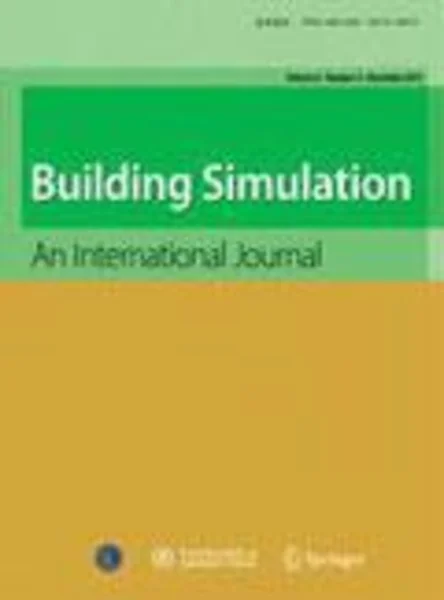-
impact of non-uniform urban surface temperature on pollution dispersion in urban areas
جزئیات بیشتر مقاله- تاریخ ارائه: 1392/07/24
- تاریخ انتشار در تی پی بین: 1392/07/24
- تعداد بازدید: 789
- تعداد پرسش و پاسخ ها: 0
- شماره تماس دبیرخانه رویداد: -
airflow pattern through street canyons has been widely studied to understand the nature of pollution dispersion in order to develop guidelines for urban planners. one of the major contributing parameters in pollution dispersion is thermal-induced flow caused by surface and air temperature difference. however, most of the previous studies assumed isothermal condition for street canyons. those addressed the thermal-induced flow, have assumed a uniform wall surface temperature distribution. the external building wall surface temperature distribution is not uniform, and is influenced by many factors including the wall surface characteristics, and shading. the non-uniform temperature distribution significantly impacts on 3-dimensional airflow within street canyons. moreover, effect of intersection is barely considered in the literature where l/h<3 (l and h are respectively length and height of street canyon). this paper reports the development of a 3-dimensional model to study the effect of non-uniform wall surface temperature distribution on the pollution dispersion and flow pattern within the short street canyons (l/h<3). for this purpose, a computational fluid dynamics (cfd) model is developed to investigate these effects on pollution dispersion in various prevailing wind velocities and directions. moreover, active and passive techniques to reduce the level of concentration are examined. the study clearly shows that thermal-induced flow dominates during fair-weather condition.
مقالات جدیدترین رویدادها
-
استفاده از تحلیل اهمیت-عملکرد در ارائه الگوی مدیریت خلاقیت سازمانی و ارائه راهکار جهت بهبود
-
بررسی تاثیر ارزش وجوه نقد مازاد بر ساختار سرمایه شرکت های پذیرفته شده در بورس اوراق بهادار تهران
-
بررسی تأثیر سطح افشای ریسک بر قرارداد بدهی شرکت های پذیرفته شده در بورس اوراق بهادار تهران
-
بررسی تأثیر رتبه بندی اعتباری مبتنی بر مدل امتیاز بازار نوظهور بر نقد شوندگی سهام با تأکید بر خصوصی سازی شرکت ها
-
تأثیر آمیخته بازاریابی پوشاک ایرانی بر تصویر ذهنی مشتری پوشاک ایرانی (هاکوپیان)
-
ارزیابی پتانسیل روانگرایی در خاکهای رسی مطالعه موردی: سایت اجرایی ایستگاه پمپاژ جزیره مینو
-
طراحی تفرجگاه ساحلی شهرستان محمودآباد در جهت بهبود تصویر ذهنی مقصد با رویکردی بر ارتقای جذب گردشگر
-
modeling thermal conductivity augmentation of nanofluids using diffusion neural networks
-
improvement of dry float–sink separation of smaller sized spheres by reducing the fluidized bed height
-
ranking the chemical firms listed in tehran stock exchange by topsis method
مقالات جدیدترین ژورنال ها
-
مدیریت و بررسی افسردگی دانش آموزان دختر مقطع متوسطه دوم در دروان کرونا در شهرستان دزفول
-
مدیریت و بررسی خرد سیاسی در اندیشه ی فردوسی در ادب ایران
-
واکاوی و مدیریت توصیفی قلمدان(جاکلیدی)ضریح در موزه آستان قدس رضوی
-
بررسی تاثیر خلاقیت، دانش و انگیزه کارکنان بر پیشنهادات نوآورانه کارکنان ( مورد مطالعه: هتل های 3 و 4 ستاره استان کرمان)
-
بررسی تاثیر کیفیت سیستم های اطلاعاتی بر تصمیم گیری موفق در شرکتهای تولیدی استان اصفهان (مورد مطالعه: مدیران شرکتهای تولیدی استان اصفهان)
-
مروری بر اثر فاکتورها و روش های خشک کردن گیاهان دارویی در فرآیند های پس از برداشت، روی کمیت و کیفیت گیاهان دارویی
-
تاثیر ارزش ویژه برند برموفقیت شرکتهای پیمانکار درمناقصات (مورد مطالعه: شرکت پیمانکاری جهاد نصر زنجان)
-
بررسی تاثیر قیمت نفت و نوسانات آن بر بازده دارایی شرکت ها پذیرفته شده در صنعت شیمیایی و پالایشی بورس اوراق بهادار تهران
-
مواجهه در غیاب ؛ اصول اساسی دیالوگ میان نظریه های ادبی نامتجانس
-
جایگاه دانش سیاسی و مدیریت در علوم حکمرانی




سوال خود را در مورد این مقاله مطرح نمایید :